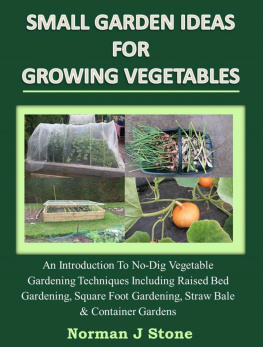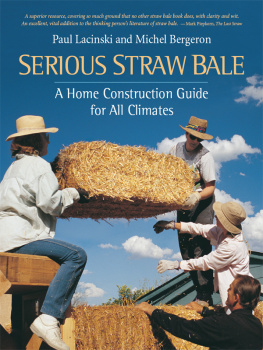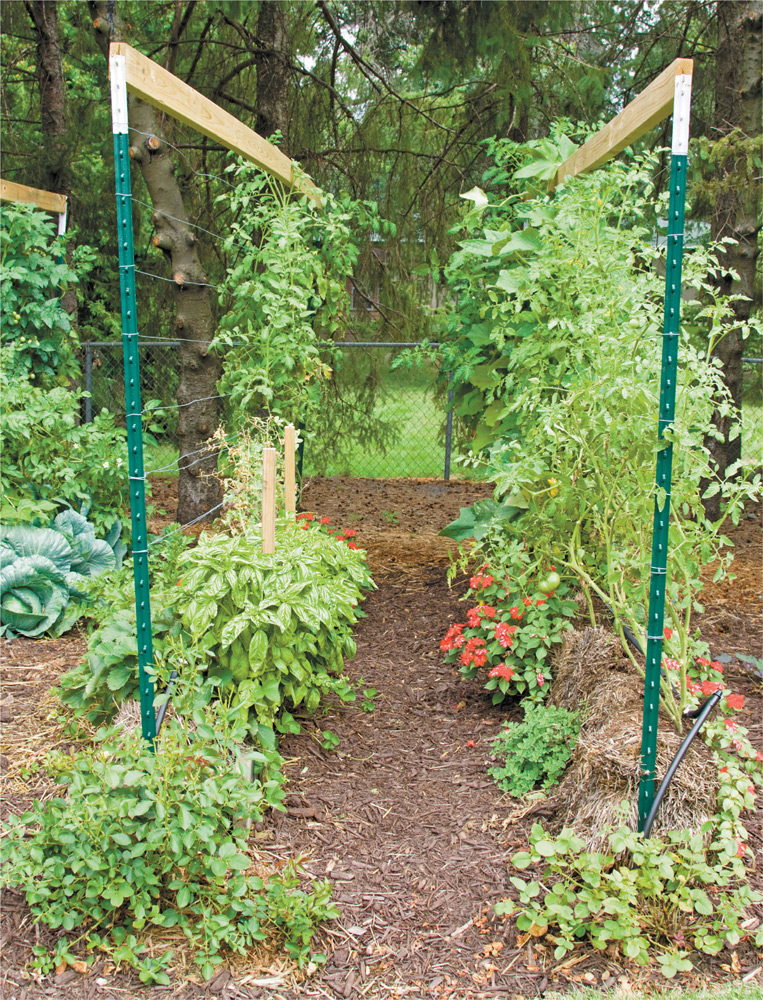STRAW BALE GARDENS
Complete

BREAKTHROUGH VEGETABLE GARDENING METHOD
JOEL KARSTEN

First published in 2015 by Cool Springs Press, an imprint of Quarto Publishing Group USA Inc.,
400 First Avenue North, Suite 400, Minneapolis, MN 55401
2015 Quarto Publishing Group USA Inc.
Text 2013, additional text 2015 Joel Karsten
All rights reserved. With the exception of quoting brief passages for the purposes of review, no part of this publication may be reproduced without prior written permission from the Publisher.
The information in this book is true and complete to the best of our knowledge. All recommendations are made without any guarantee on the part of the author or Publisher, who also disclaims any liability incurred in connection with the use of this data or specific details.
Cool Springs Press titles are also available at discounts in bulk quantity for industrial or sales-promotional use. For details write to Special Sales Manager at Quarto Publishing Group USA Inc., 400 First Avenue North, Suite 400, Minneapolis, MN 55401 USA. To find out more about our books, visit us online at www.coolspringspress.com.
Library of Congress Control Number: 2014955422
Digital edition: 978-1-62788-606-2
Softcover edition: 978-1-59186-907-8
Acquisitions Editor: Mark Johanson
Art Director: Cindy Samargia Laun
Cover Design: Erin Seaward-Hiatt
Book Design: Pauline Molinari
Layout: Pauline Molinari and Rebecca Pagel
Photography: Tracy Walsh
Illustration: Pam Powell and Bill Kersey
Dedication
This book is dedicated to the one true love of my life, Patty, without whom I would have no sunny days.
Contents
Introduction

IT SEEMS LIKE IVE TOLD THE STORY of Straw Bale Gardening a million times over the years, to audiences big and small all over the world. But I never get tired of it. Its a good story and it keeps getting better, in large part because my method is young and always evolving and improving. Thats also the reason we chose to come out with a new edition of my book so soon after the first Straw Bale Gardens was published just a couple of years ago. The tens of thousands of gardeners whove decided to give my SBG technique a try are an enthusiastic group, and I get an enormous amount of direct feedback and many, many questions. I listen, and Im constantly working to expand the techniques in ways that address the most common concerns people have. This has resulted in some very exciting additions to the information and advice I have offered before. The basics havent changed at all, but I think youll find several new ideas that make the SBG method more accessible and more practical for even more people.
When folks hear me describe Straw Bale Gardening for the first time, the reaction is fairly predictable. At first, they wonder how it works and they ask questions like How to you get the dirt into the bales? But then there is a moment where the light goes on and they understand that you dont use dirt at all: its the straw itself that feeds the plants. I love the way you can see the sudden look of understanding when people smile and nod and even shake their heads in a kind of amazement. It might be what I love most about teaching the SBG method.
Once people get it, the questions usually come in waves. Where do you get the bales? Can you make an organic SBG? What about planting seeds? Can I put an SBG on my deck or driveway? Does it really work? In this second edition of my book Ive done my best to provide new answers and solutions. Even if you are one of the more than 100,000 people who have read the first book cover to cover, I think youll find some great new information in Straw Bale Gardens Complete that will make your SBG experience even more productive and efficient.
Joel
The Straw Bale Gardening Story II
Everyone has heard it said that necessity is the mother of invention, and I must agree. It was just after graduating from college, and hours after buying my first house, that I discovered my new home was surrounded with construction fill. Instead of the fertile farmland I grew up on, I found only clay, gravel, rocks, and old bricks that had been graded, compacted, and frosted with an inch of blackish topsoil. Anyone with even a rudimentary working knowledge of growing plants could decipher the cards Id been dealt. Planting anything in this soil would require a backhoe, a couple of months with a pick axe, and several truck-loads of good quality compost to amend the concrete into a state where it might actually produce something. Rescuing this soil would be very expensive, so for a young, new homeowner with college loans to pay, it wasnt an option.
The Author as a farmboy, working hard and dreaming up new ways of doing things.
While I didnt have much money, I did have a fresh Bachelor of Science in Horticulture degree from the University of Minnesota, as well as some distinct memories of growing up on a small farm. There, we always seemed to have a few broken bales of straw that would get piled up along the side of the barn. After a few months of decomposing, the biggest, greenest, healthiest thistles on the whole farm would spring up from these bales. I wondered, even as a young boy, why the healthiest looking weeds were always the ones growing out of these old bales, but as a recent horticulture student I now knew. In my exhaustive study of soils, composting, plant physiology, and all things horticulture, I found that most mysteries, including why weeds grow in bales, can be explained by sciencemicrobial soil science, to be exact. The old bales, I deduced, were composting inside, creating brand new soil. This provided a phenomenal growing environment for weeds. So why, then, couldnt I use bales of straw to grow vegetables? I decided to explore the question and Ill say it again: necessity is the mother of invention. If I had been able to come up with $200 to build raised beds instead, you might well be reading a mystery novel right now, instead of this book called Straw Bale Gardens Complete.
The system I now like to call SBG wasnt an instant success, unless you consider 15 years of experimenting and perfecting a method to be instant success. Its not as simple as it might seem to some onlookers and many would-be bale-gardeners who dont bother to learn the right method. Well, you just buy a bale of straw and dig out the inside and put in a little dirt and then drop in the plants, they conclude, and Shazam! You have a garden. Not exactly. Ive seen what happens when its done this way, and its a disaster. The plants starve to death and the dirt brings in weed seeds and disease we are trying to avoid.
One of the test gardens in my own backyard. Over the years some of my neighbors may have wondered about my experiments, and its hard to blame them.












